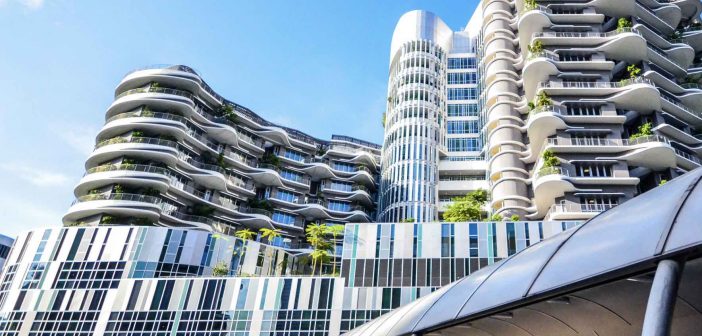Singapore has consistently proven that its healthcare system is one of the best in the world. In 2000, the Lion City held a top spot in the World Health Organization’s rankings on the best healthcare systems in Asia.
In 2020, during the COVID-19 pandemic, Bloomberg Health Efficiency Index ranked Singapore at the top, taking into account the country’s gross domestic product and COVID-19’s impact on mortality rates.
The Ministry of Health manages the country’s robust health system and commits to providing quality and affordable medical services to residents and non-residents alike. Healthcare facilities and insurances are classified into state-owned and private institutions, including restructured hospitals, dental clinics, and physiotherapy clinics Singapore patients can trust.
The small country’s world-class healthcare facilities attract foreigners and patients from all over the world. For a better understanding of how the healthcare system in Singapore works, let’s take a look into the available medical facilities and financial systems that make this world-renowned system operate efficiently.
Available Healthcare Facilities
The healthcare establishments in Singapore are divided into two: government and private facilities. For the average person, it can be hard to imagine a public hospital offering world-class services, but that is the reality in Singapore. To expound further, consider the following.
Government Healthcare Facilities
Public hospitals are also called restructured hospitals. While they technically belong to the government, they operate like private facilities. This arrangement fosters healthy competition between public and private facilities and encourages them to improve their services and efficiency.
Aside from this, the government health system also sets the benchmark on the fees, medical standards, and long-term trends in the private sector. It provides consistent updates on healthcare costs, which help the private sector offer competitive prices to their patients.
The main con of government healthcare facilities is the waiting line. Patients can line up for hours for a drop-in visit or months for a special test or operation and for a good reason. Medical costs are generally lower in government facilities.
Private Healthcare Facilities
The private healthcare sector consists of private hospitals and private clinics that offer outpatient services. Compared to government facilities, private hospitals and clinics can offer a greater level of convenience and comfort for their patients. Some of the perks of being a patient of a private facility include:
- Shorter waiting lines
- Ability to choose your doctor (doctors are assigned in government facilities)
- Private (and even luxurious) wards
- Better patient experience
Overall, the healthcare system relies on the competition between public and private facilities and market forces to help ensure that Singaporeans receive quality healthcare. While healthcare facilities primarily function like private companies, the government intervenes directly if healthcare costs fail to remain affordable for the masses.
Different Kinds of Healthcare Insurance Schemes
Singapore’s healthcare system draws from multiple financial sources to operate, including government subsidies, private insurances, and premiums. An individual’s healthcare coverage highly depends on your immigration status—whether you’re a Singaporean citizen, permanent resident, non-resident, or visitor. Healthcare coverage can also be divided into, namely:
Government Health Insurance
Singapore citizens and permanent residents can avail themselves of subsidized healthcare services in state-owned facilities, which cover a range of 50% to 80% of medical costs. Part of the subsidies stems from the Central Provident Fund (CPF), a mandatory savings scheme used for a person’s retirement, healthcare, and housing needs.
Medical costs are payable through the “3Ms” of Singapore Healthcare. These are:
- MediShield Life — Universal healthcare insurance that will pay for large hospital bills and select outpatient treatments. It also provides basic coverage, which is often insufficient if a person is availing of private healthcare.
- MediSave — A national medical savings scheme that all CPD members have to contribute to. It’s designed to ease the costs in case MediShield Life coverage is insufficient.
- MediFund — A government fund for Singaporeans who need help in settling their medical bills outside of MediSave’s scope. all applications are screened and the subsidy offered differs from case to case.
Private Health Insurance
Foreigners working and visiting the country are exempted from contributing to the CPF. However, they cannot make use of the health insurance subsidies offered by the government. Hence, foreigners often go to private insurance companies and choose a policy that best matches their needs. If they are working for a medium to large-sized company, the employer most likely has an insurance policy option to help protect the workers and their families in case of medical emergencies.
Private health insurance is not limited to foreign workers and visitors. Singapore citizens and permanent residents can avail themselves of additional premiums to bolster their current insurance policies. Integrated Shield Plans, for example, offer additional benefits on top of those offered by MediShield Life.
All in all, Singapore’s healthcare system is effective as it is complicated. For clarity, it is essential to read the fine print of insurance policies and to ask the employer or a healthcare professional about one’s healthcare coverage and possible insurance options.





3 Comments
Pingback: The Costs Of Dental Care In Singapore
You’re right, it’s important to understand how your healthcare system works so you can get help or advice when you need it. But I like the way it works in Singapore. There I somehow checked my vision and possible eye problems. I was then given a prescription for this product https://www.amazon.in/Prorganiq-Supplement-Bilberry-Capsules-All-Natural/dp/B09KL5MNZ7 to improve their health
The Ministry of National Health Services, Regulation and Coordination (NHSRC) is the cabinet level ministry of the government of Pakistan with responsibility for national public health. It was formed on 1 June 2011 and is headquartered in Islamabad. The current Federal Minister of NHSRC is Abdul Qadir Patel. cambiati Restructured hospitals that have been upgraded and modernized with the help of foreign aid. They offer a wide range of medical services, including inpatient and outpatient care, diagnostic and laboratory services, and surgical procedures.